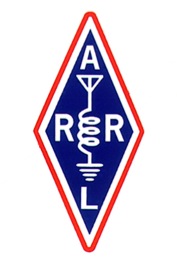WB8NUT - Operator/Station Background
I was first licensed in late 1972 as WN8NUT (Novice Class). At that time, the Novice Class license expired after two years. Not wanting to lose my ham radio license, but also not very proficient in CW, I decided to upgrade to Technician. I upgraded to Technician in 1974, and my call was changed to WB8NUT.
At that time Technicians did not have any HF privileges, so all my time was spent on 6 and 2 meters. I really fell in love with 6 meters, operating principally on 50.4 using AM.
The family moved to St. Louis in 1986 after McDonnell Douglas (now known as Boeing) transferred me there. Around that same time Technicians were given access to the 10 meter voice band. Sun spots were hopping at that time and I was getting my first taste of real DX. I had to increase my CW speed so I could pass the 13 wpm test and upgrade to General. On a business trip to Houston, I picked up some CW tapes at a downtown ham store, studied very hard and passed the 13 wpm CW test in June of 1987 at the Egyptian Hamfest in Illinois.
While living in St. Louis, I almost Worked All States. Actually got up to 46 states. But we moved back to Cincinnati in 1990 and that pretty much started the process all over again. In February 2002, I finally achieved WAS. I was able to get my WAC certificate while I lived in St. Louis. I recently reached 103 confirmed countries and submitted the QSL cards to the ARRL for DXCC. On September 26, 2003, I was awarded DXCC certificate #39,162. I am currently working on WAS RTTY endorsement and WAS Digital endorsement and only a few states yet to achieve those endorsements. In late 2011 I received a second all-mode WAS award just using the ARRL LOTW system. In 2012 I received another award for WAS using Digital only. In early 2013, I received a fourth award for WAS using only the JT-65 digital mode. So now I have one WAS award achieved using traditional paper QSL cards, and three WAS awards that used all digital QSL confirmations!
I am active on HF on all bands except 160. Rigs are a Kenwood TS-590S, Yaesu FTdx-1200 with digital interface, Yaesu FT-817 (QRP), MFJ 9420 (QRP), various FM VHF and UHF base/mobile transceivers and handhelds for 2 meters, 220 and 440; ID-51A handheld for D-Star; Anytone 868 handheld and 578 mobile; and finally an Alinco DJ-MD5T handheld for DMR. HF antenna is a 6-Band (6BTV) vertical and a 6 Meter dipole.
Many years ago I jumped aboard the digital bandwagon and operate on the more popular digital modes like FT8, JT65 PSK31, MFSK, and Hellschreiber. FeldHell (a Hellschreiber mode) is my favorite mode on HF with most of my activity on 20 meters. I primarily use Ham Radio Deluxe/DM-780, but will occasionally use FLDigi and MultiPSK software for all the new soundcard digital modes including SSTV. I use the WSJT-X software for FT8, FT-4, JT-65 and related as it interfaces nicely with Ham Radio Deluxe. I recently attained an endorsement to the VUCC award for 175 grid squares. Most of it using FT8 with a simple 6 Meter dipole in the garage attic.
I have recently started using VARA with Winlink and also VarAc for chat using VARA. This mode is a lot of fun and very robust. You can get a free version with has a smaller bandwidth, or pay around $70 for get a version that offers greater bandwidth and faster data through-put which is mostly needed for Winlink users and not for just simple chatting.
I also just started experimenting with ARDOP, an open digital protocol for data, but still too early to comment.
Believe or not, I have gotten back into packet on both VHF and HF. Surprised at the number of people back on packet. Using Kantronics KPD3+ for VHF and UZ7OH soundcard modem for HF.
All of my software for digital modes runs on a Hewlett-Packard computer system with a quad-core Intel processor and 6GBs of memory and Windows 10. I needed a beefy computer since I run so many amateur related software applications at the same time.
Below are some sample SSTV pictures that I received using the JVCOMM32 program.
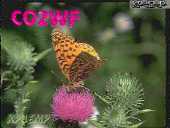
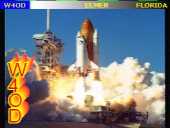
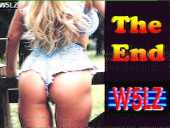 (these samples are 25% of the actual size)
(these samples are 25% of the actual size)
Field Day 1998 from the backyard
When the weather is nice, I love operating outside on the back patio. In 1998 I participated in Field Day using QRP and battery power on the patio. If you are interested in seeing pictures of my Field Day '98 (QRP of course!) operation (I can't believe it was that long ago since the last time I operated Field Day from the house). Here is a picture the XYL took of my patio Field Day Operation.
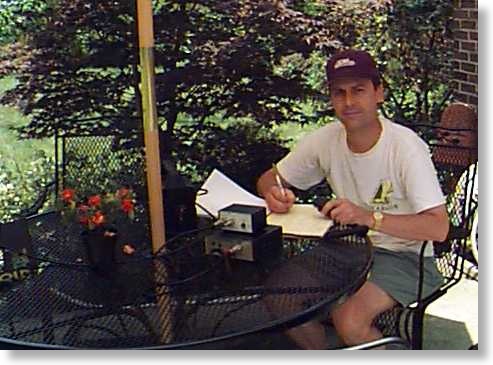
Memberships:
American Radio Relay League (the organization every ham should join)
Fists - 9920
Flying Pigs QRP - 464
Feld Hell Club - 75
OMISS - 4383
SMIRK - 5279
TAPR - 8639
Ten-Ten - 45041
PODXS 070 Club - 172
Current Operating Awards:
WAC - Isn't this everyone's first award?WAS - Using 100% paper QSL cards
WAS - Using 100% LoTW Electronic QSLs
WAS - All Digital
WAS - All JT65
WAS - All RTTY
DXCC - Mixed
DXCC - Phone
DXCC - Digital
DXCC - 15 Meter Band
DXCC - 10 Meter Band
WPX - Mixed
WPX - Digital
WPX - Mixed North America
WPX - Digital North America
VUCC - 6 Meters (175 Grid Square Endorsement)
I QSL 100% using standard postcard QSLs or via LOTW. If sending QSL by mail, please include an SASE.
Please feel free to use the Contact Page to send me a note.
